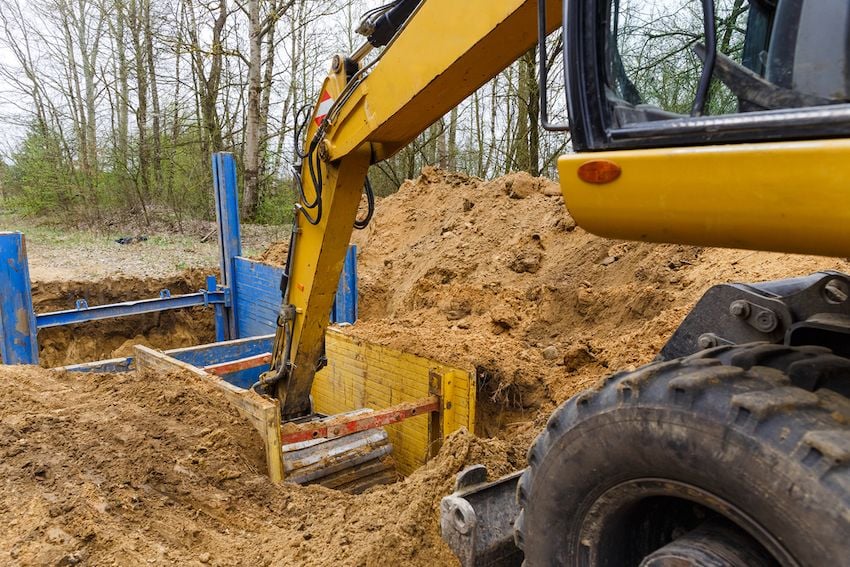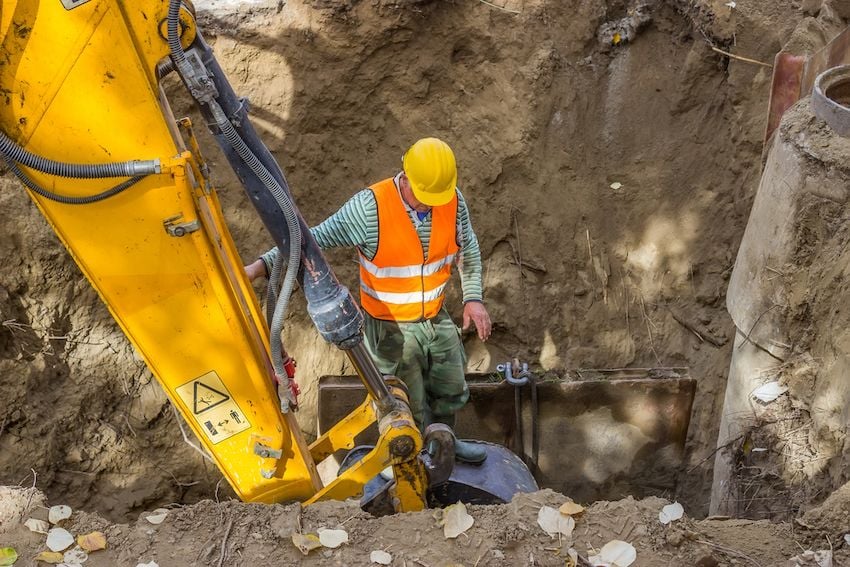An average of 22 workers died every year from 2011 to 2019 due to trenching or excavation cave-ins, according to the Bureau of Labor Statistics. The National Utility Contractors Association has proclaimed June Trench Safety Month, making now the perfect time to highlight the important role a “competent person” plays in trenching and excavation work.
Per the Occupational Safety and Health Administration (OSHA), a competent person is “an individual, designated by the employer, who is capable of identifying existing and predictable hazards in the surroundings or working conditions which are unsanitary, hazardous or dangerous to workers, and who is authorized to take prompt corrective measures to eliminate them.”
Serving as a competent person is a big job that comes with many important responsibilities, including coordinating the emergency response plan and having a deep knowledge of soils, protective systems, and OSHA rules. Here, we take an in-depth look at the role of a competent person in a trenching and excavation setting.
5 tasks performed by a trenching and excavation competent person
1. Classifying soil
OSHA has three classifications for soil: Type A, Type B, and Type C. Properly categorizing the soil is a crucial part of trenching and excavation safety, and that responsibility is held by the competent person.
To determine each type of soil, OSHA uses a measurement called “unconfined compressive strength,” which is the amount of pressure needed for the soil to collapse. In most cases, this metric is measured in units of tons per square foot.
The most stable to excavate, Type A soil is cohesive and has a high unconfined compressive strength. Often cracked or disturbed, Type B is cohesive, but pieces don’t stick together as well as Type A. The least stable type of soil, Type C has both granular soils containing particles that don’t stick together and cohesive soils with a low unconfined compressive strength.
In addition to being well-versed on the different soil types, the competent person also needs to know the signs of soil distress, as they indicate the likelihood of a cave-in. This includes fissures or cracks in a trench or excavation wall, a trench wall that falls or slumps into the excavation, soil bulges or heaves, excavation with a sinking edge, and materials—like pebbles or clumps of dirt—dropping into the excavation.
Read: How to Prevent Injuries and Fatalities from the Top 4 Construction Hazards
2. Inspecting protective systems
OSHA trench regulations require a protective system in trenches 5 feet deep or greater, with the exception of those composed entirely of stable rock. If a trench is less than 5 feet deep, the competent person is responsible for determining whether a protective system is needed.
The competent person is also tasked with ensuring the materials and equipment used for protective systems are in good working order. This must be done properly because damages can cause protective systems to fail and other excavation hazards to occur.
If damages are found, the competent person is in charge of evaluating the materials and equipment to determine if it’s safe for continued use. If deemed unsafe, the competent person removes them from service until they’re assessed by a registered professional engineer.
Some of the most common types of trench protective systems include sloping and benching, shoring, and shielding. Sloping refers to the angles of the trench walls at an incline, and benching means to excavate the side of the trench using a series of steps.
Designed by an engineer and typically built in place, shoring uses trenching and excavation support walls to prevent a cave-in. A permanent or portable structure, shielding is able to handle the forces of a cave-in and protect the workers inside.
Check out: 6 Safety Stand Down Topics for Pipeline Construction Workers
3. Designing structural ramps
Under OSHA excavation standards, employers are required to provide ladders, steps, ramps, or other safe exits when workers are in trenches 4 feet or deeper. They must be located within 25 feet laterally inside the trench.
When structural ramps are used exclusively for worker access or exits, they must be designed by a competent person. OSHA specifically mandates that the competent person be qualified in structural design.
4. Monitoring water removal equipment
When water gets into an excavation, it can undermine its sides, making it challenging for workers to get out. OSHA standards ban employers from permitting workers to enter an excavation with accumulated water or where water is accumulating, unless proper safeguards are put in place.
If water removal equipment is used, OSHA requires equipment and operations to be monitored by the competent person. This measure is taken to ensure water removal equipment is used properly.
This is important, because there’s a serious risk of drowning in a trench with water accumulation. The competent person ensures the correct precautions are taken, so the water can be safely removed.
Also see: Create a Safety-First Culture to Prevent Worker Safety Incidents
5. Conducting site inspections
Before workers enter a trench each day, OSHA excavation standards require it to be inspected by a competent person. This move is made to ensure no excavation hazards are present.
Specifically, OSHA requires the competent person to inspect all excavations, adjacent areas, and protective systems each day for potential cave-ins, signs of failures in protective systems and equipment, hazardous atmospheres, and other hazardous conditions.
In addition to daily site inspections, the competent person must also perform site inspections on an as-needed basis throughout the shift. OSHA also requires them to conduct inspections after natural events like rainstorms and hazard-increasing activities like blasting work.
If, after conducting an inspection, the competent person believes a site could be hazardous, workers must halt all activities and exit the trench. They cannot return until preventative measures have been taken to eliminate the safety risk.
Trenching and excavating are among the most hazardous construction activities, so the role of a competent person on sites where trenching and excavation is happening should not be understated. These individuals take every precaution to protect workers from safety incidents like cave-ins and send them home unscathed at the end of every shift.
For more worker safety help, check out the video “The Future of Worker Safety in Utilities,” featuring Southern Company Gas CEO Kim Greene and Leading Utility Safety Expert Nick Stavropoulos.

